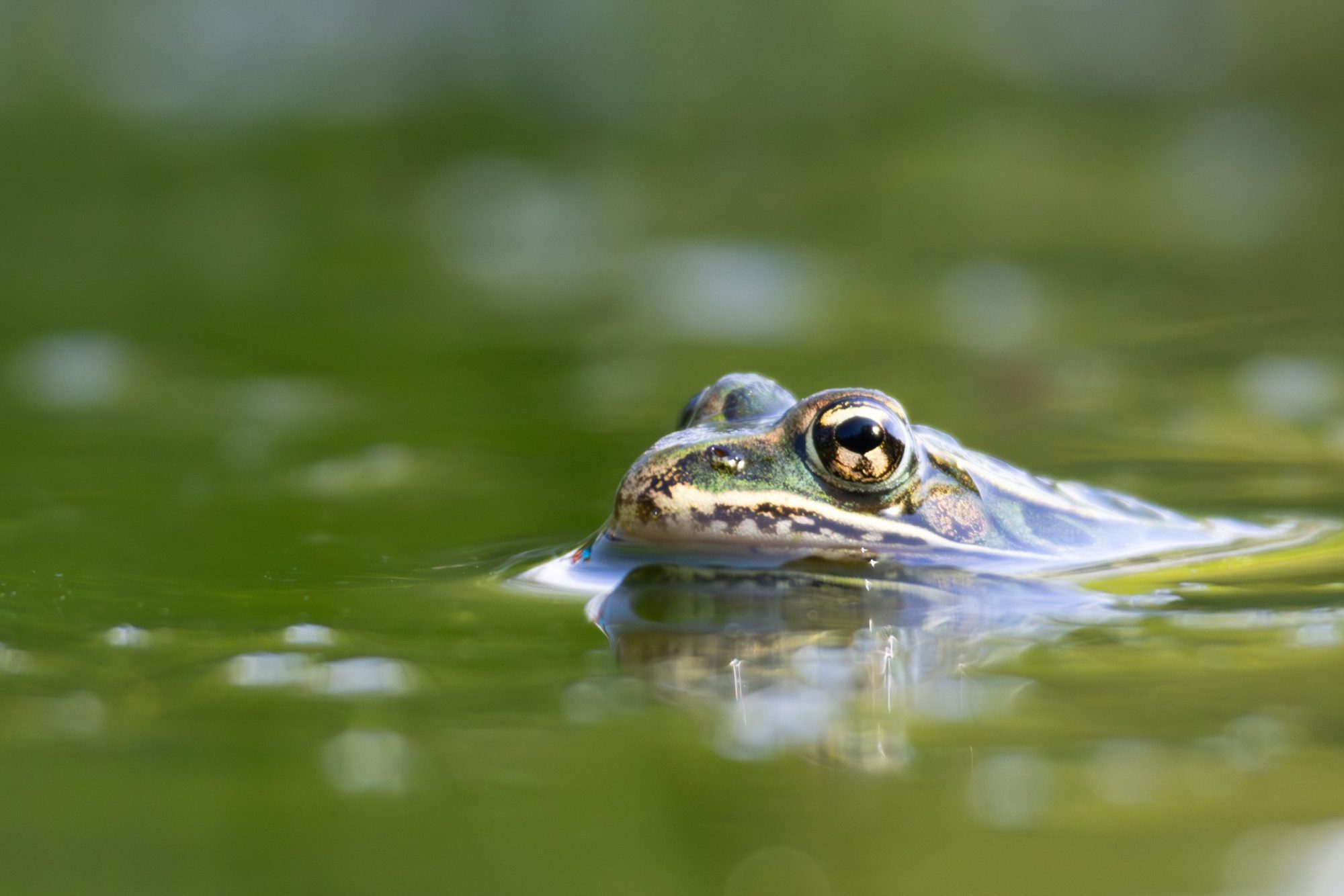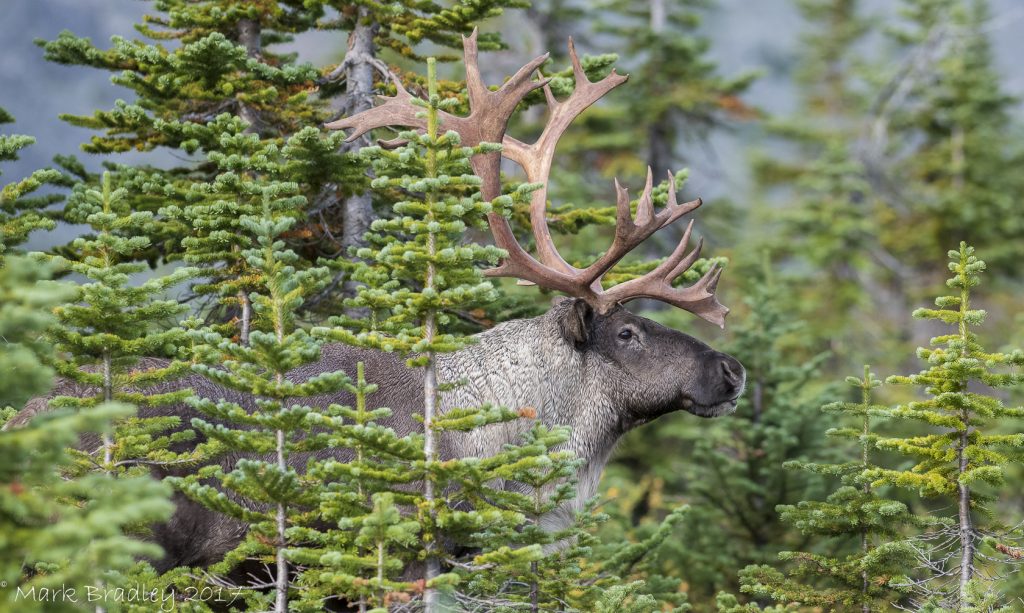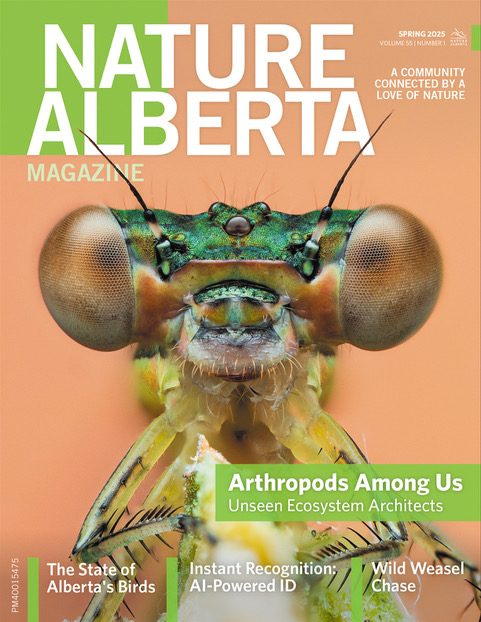My BIG Alberta Backyard: Species at Risk
16 April 2025

By ERIN ARNASON
Alberta is a great place to live. It’s a big, beautiful province full of all kinds of natural wonders. In My Big Alberta Backyard, we introduce you to the unique and interesting wild spaces that you can find in your province, and the diverse wildlife that live there. This time, let’s talk about species at risk in different regions of Alberta.
Species at Risk in the Wetlands
Wetlands are “semi-aquatic” ecosystems like swamps, marshes, and fens, where the ground is covered by water, either permanently (all the time) or seasonally (at certain times of year). Wetlands are important to Alberta’s landscape. Not only are they home to a large variety of plants and animals, they also help clean polluted waters and prevent floods. Wetlands cover around 21.7% of Alberta and provide habitat for around 400 species, some of which are at risk of disappearing from the province.
One wetland species at risk in Alberta is the northern leopard frog, named for its leopard-like spots. This frog was once common throughout Alberta, but since the late 1970s their numbers have dropped significantly; they have nearly disappeared from most of their historic Alberta range.
You can help this declining species! When visiting wetlands, watch for frogs and other amphibians. With the help of an adult, you can submit observations and pictures through the iNaturalist app, which is used by the Alberta Volunteer Amphibian Monitoring Program to keep track of leopard frogs and other species. Your submissions help people monitor how these species at risk are doing in our province.
Species at Risk in the Boreal Forest
The boreal forest is home to plants and animals that have adapted to survive cold northern temperatures. Covering over 58% of Alberta’s land, the boreal forest stretches through northern Alberta up to the border with the Northwest Territories. In this huge region, you can find some of Canada’s most iconic mammals, such as moose, black bear, and white-tailed deer. One large mammal that needs help is the woodland caribou.
The woodland caribou is at risk from humans removing their habitat by cutting down trees. Forests provide cover for caribou to hide from predators such as wolves; when forest disappears, so do caribou. We need to take better care of these forests to save declining caribou populations, and this will also help many other animals that live in the boreal forest.

Caribou love to eat lichens, which grow best in old-growth forests that are undisturbed by people. MARK BRADLEY
Species at Risk in the Grasslands
Prairie grasslands are large, flat or gently hilled areas covered mostly in — you guessed it — grasses. Many species have adapted to living on these open plains, but these days they have a lot less room than they used to. In Alberta, 74% of native grasslands have been lost to human activities such as agriculture and urban development, and only 1.25% are in protected areas. This has had a huge impact on grassland species that cannot survive in areas used by humans. One of these species is the greater sage-grouse.
The greater sage-grouse is a large bird that is at risk of disappearing because of habitat loss. Since the 1960s the population has dropped by 90%. Scientists across the province are working to help these birds by creating breeding programs, which can help boost their populations, and by raising awareness about the importance of protecting their grassland habitats.

The greater sage-grouse look a bit like a turkey with a fuzzy white scarf. Scientists are hoping to save this cool-looking species in Alberta by protecting the grasslands they live in.
You can help preserve species at risk, too. You’re taking the first step right now, just by learning about them! When you’re out exploring your big Alberta backyard, be respectful of wildlife and their space — take home lots of pictures and memories, but leave wild spaces clean and undisturbed. You’ll find more ways you can learn about, explore, and help protect nature at naturealberta.ca/nature-kids.
Read the Original Article for this Post
For a richer reading experience, view this article in the professionally designed online magazine with all images and graphs in place.
This article originally ran in the Spring 2025 issue of Nature Alberta Magazine (Vol. 55 | No. 1).


